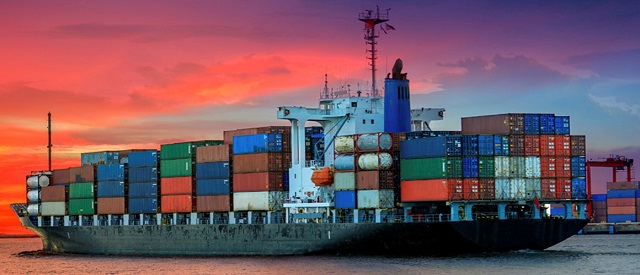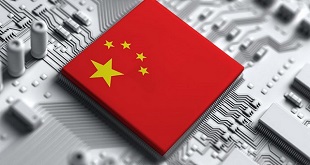
China is positioned to gain from significant constraints to accelerating and diversification of intra-Africa trade
COMMENT | JONATHAN MUNEMO | The African Continental Free Trade Area (AfCFTA) intends to promote regional trade integration in Africa, which can play an important role in accelerating sustained growth and reducing poverty on the continent.
Currently, regional trade within Africa is fairly low, and its share amounts to only about 11 percent of total trade. Launched in March 2018 by the African Union, the AfCFTA agreement connects 55 African economies and is the largest free trade area in the world in terms of country membership.
The COVID-19 pandemic has delayed the AfCFTA process, and as a result, the continental trading bloc only entered into force in January this year. By creating a combined market size of 1.3 billion people with a total income worth $3.4 trillion, this new trading bloc can potentially yield immense economic gains – but the biggest beneficiary may be China rather than Africa.
China is Africa’s largest trading partner, providing a market for 16 percent of Africa’s total exports and supplying 19 percent of its total imports in 2020 (these shares were significantly higher before the deep economic recession caused by the COVID-19 crisis). China is thus already positioned to gain from two significant constraints to accelerating the growth and diversification of intra-Africa trade.
First, infrastructure deficits are widespread in most of the countries in Africa. Diagnostic studies of trade integration conducted by the World Bank find inadequacies in transport, communications, and energy infrastructure – roads, ports, airports, telecommunications, electric power, and so on. These deficiencies burden African exporters with high input costs, high transport costs, and expensive delays in reaching regional and global markets. They are a particularly significant handicap for the transit of goods to and from the 15 landlocked African countries.
Infrastructure projects in Africa that are financed by Chinese loans have been on an upward trajectory for more than a decade and are already helping to address this constraint. Implementation of the AfCFTA agreement will thus provide Chinese companies with additional business opportunities to undertake infrastructure investment projects needed to advance regional trade integration in Africa.
Second, prospects for expanding intra-African trade in the short term are hampered by the similarity of African export structures, which limits the range of products that can be exchanged with regional partners.
Exports remain heavily concentrated in traditional primary products, with the top four export products being petroleum oils, gold, diamonds, and cocoa beans. However, the primary products that are mostly exported by African countries are not the main imports of African countries, which consist of manufactured and capital goods (machinery and equipment). Only a few African countries like South Africa have a limited capacity to supply manufactured products to regional markets.
Therefore, in the short term, Africa’s current imports of manufactured goods, machinery, and equipment cannot be domestically produced because most African countries lack the capacity to do so and will need a long period of time to develop more diversified economies. Until then, potential gains from regional trade integration under the AfCFTA are likely to be relatively small, and China will continue to benefit from being the largest supplier of Africa’s imports.
If the AfCFTA is successful in diversifying production and export structures over the medium term, this will facilitate the participation of African firms in regional value chains, and additionally in global value chains once they acquire the necessary level of competitiveness. Given that China will be keen to protect its strategic and economic relationships in Africa, it is entirely possible that China will be more than willing to support the development of value chains that will enable African firms to gain a foothold in the Chinese market alone. This would transfer additional benefits of the AfCFTA to China.
Conclusion and Recommendations
Progressively expanding free access to the large continental market by eliminating tariffs and other border barriers alone will not have the immediate impact of prompting a strong supply response from regional exports.
The AfCFTA’s major challenge is to effectively address these two constraints and thereby substantially accelerate regional trade growth and diversification in Africa. The potential gains from free access to the larger continental market are huge, and China will most likely reap a substantial share of these gains.
China, though, has repeatedly emphasised its desire to engage with Africa in ways that advance the economic development of African countries. In the context of the AfCFTA, Chinese support in the following three areas would be helpful in this regard.
First, both sides should foster links between Chinese and African firms that will address weak productive capacities, which currently inhibit fuller development of economic diversification. This will boost intra-African trade.
Second, China should continue to finance investments in reliable trade-related infrastructure, including transport, communication, and energy infrastructure, to provoke a strong supply response from the African private sector. This includes financial support for trans-border infrastructure projects that link African countries and regions and close gaps in regional infrastructure networks.
Third, China should consider increasing aid to Africa, especially amid the pandemic recovery efforts. On August 23, the International Monetary Fund (IMF) released $650 billion worth of Special Drawing Rights (SDRs) to its members. This boost in global liquidity support will allow African countries, which have been hard hit by the pandemic, to use their share of SDRs to accelerate vaccine rollout and mitigate the health, social, and economic impacts of COVID-19.
Distribution of the SDRs was made in proportion to existing quotas of IMF member countries. These quotas are determined by the size of a member’s economy and its role in the global economy. These distribution criteria effectively mean that China and high-income countries, which already have more widespread vaccine access, receive the largest shares of SDRs. China should therefore consider using some of its large share of SDRs to increase development assistance for Africa to support the implementation of comprehensive complementary reforms necessary to take advantage of increased regional export opportunities.
****
Jonathan Munemo is an Associate Professor of Economics in the Perdue School of Business at Salisbury University in Maryland. Source: Diplomat Brief
 The Independent Uganda: You get the Truth we Pay the Price
The Independent Uganda: You get the Truth we Pay the Price


